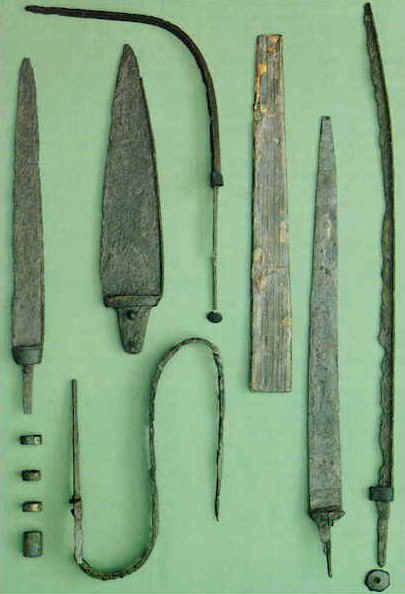Posts: 1,757 Location: Storvreta, Sweden
Mon 19 Sep, 2005 2:55 am
Good points, Jeroen.
"
Seax" would be tool-knife, "scramaseax" would be the weapon: that is the contemporary understanding of the words, right?
I do not know how early we can trace the word seax or scramaseax?
When did the Saxons enter history?
How much earlier could we imagine the word existed?
There is no way to know how the word for blade or knife sounded in the bronze age. I do think a distinction was made between various types of swords (be they single edged or double edged, thrusters or cutters) and knives of various forms.
To be on the safe side, I can agree that it is better to call early single eged war blades simply "war-knives" or "single edged swords" (but that is simply a modern translation of the word "scramaseax").
Even if different, the Hjortspring weapons still carry strong functional similarity to later era seaxes. Enough so that I feel inclined to call them seaxes, or perhaps proto-seaxes.
Eve if the word "seax" was not used at that time, I feel it probably that they were called "blades" or "knives" perhaps also something like "war-blades" or wounding-blades" and that would be translated into scramasax.
It is like calling a Xiphos a sword even if the greek word means "piercing light" or "though-light".
It is difficult to say what degree of transition there is betwen the earlier bronze age knives to the iron age single edged blades.
I have been told that there exist weapons very similar to the Hjortspring ones in the lands beyond the eastern baltic dating to the very early iron age. I have never seen any one of these however, but I am very curious to knwo if there is a tradition travelling from the central eurasian continent to northern europe.


